 |
PO Box 9021,
Wilmington, DE 19809, USA
E-mail: font@focusonnature.com
Phone: Toll-free in USA 1-888-721-3555
or 302/529-1876 |
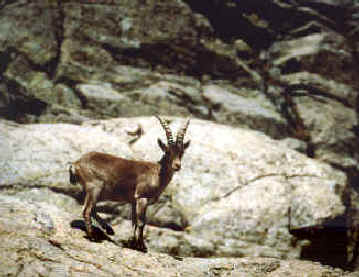 MAMMALS
MAMMALS
in Europe
noting those during
Focus On Nature Tours
1991 thru 2015
including the Canary
Islands,
off the northwest coast of Africa
A List of European Mammals compiled by Armas Hill
PHOTO AT UPPER RIGHT:
a SPANISH IBEX photographed during a FONT tour in the Gredos Mountains of
Spain
Codes:
CI:
Canary Islands
FR: France
HU: Hungary
IC: Iceland
PO: Poland
RM:
Romania
SP: Spain, with those in Gibraltar
(g)
& nearby Morocco
(m)
SW:
Sweden
(i): introduced
(p): seen offshore
(ph): with a photo in the FONT web-site
(*): species found during a FONT tour,
following the 2-letter country code above
STATUS OF MAMMALS GLOBALLY:
(t1): critically endangered
(t2): endangered
(t3): vulnerable
(nt): near-threatened
STATUS OF MAMMALS IN EUROPE:
(Ece): critically endangered
(Een): endangered
(Evu): vulnerable
(Ent): near-threatened
In this list of European Mammals, there are over 200 species.
Among the groupings of
mammals in this list, links to:
Hedgehogs Rabbits
Rodents (inc Squirrels &
Beaver) Porcupine
Carnivores
Bats
Even-toed
Ungulates
Marine
Mammals
Other Links:
Upcoming
FONT Birding & Nature Tours in Europe
A List & Photo Gallery of European Birds, in 2 parts:
Part #1: Grouse to Puffin Part #2: Sandgrouse to
Buntings
European Butterflies & Moths
Directory of Photos in this
Website

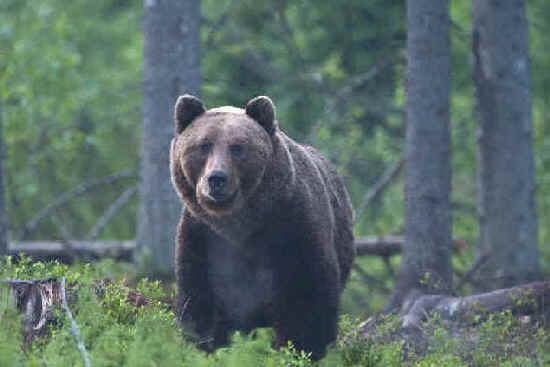
A Brown Bear in Estonia
List of European Mammals:
MOONRATS
& HEDGEHOGS (Family Erinaceidae) (21 species worldwide)
- Western Hedgehog ______ SP(*)
SW(*)
Erinaceus europaeus
- Eastern Hedgehog ______ HU(*)
PO(*)
Erinaceus concolor
- Algerian Hedgehog ______
CI(*)
Erinaceus (formerly Atelerix) algirus
RABBITS & HARES (in the Order Lagomorpha, Family
Leporidae)
(57 species worldwide)
- European Hare ______ PO(*)
SP(*) SW(*)
Lepus europaeus
- Mountain Hare ______
Lepus timidus
- Iberian Hare ______
Lepus granatensis
- Corsican Hare (vu) ______
Lepus corsicanus
- Broom Hare (vu) ______
Lepus castroviejoi
- European Rabbit ______
CI(*) SP(*) SW(*) (Note Eastern Cottontail
of North America has been
introduced to northern Spain & France. Eastern Cottontail
immune to myxomatosis)
Oryctolagus cuniculus (the single member of its genus)
RODENTS: gnawing mammals (order Rodentia -
the largest
order of mammals with nearly 2,000 species
worldwide)
Families include:
Squirrels (Family Sciuridae)
Beavers (Family Castoridae)
Hamsters (Subfamily Cricetinae)
Voles & Lemmings (Subfamily Arvicolinae)
True Mice & Rats (Subfamily Murinae)
Dormice (Family Gliridae)
Old World Porcupine (Family Hystricidae)
-
Red Squirrel ______ FR(*) PO(*)
SP(*) SW(*)
Sciurus vulgaris
- Persian Squirrel _______
Sciurus anomalus
- Alpine Marmot ______ SP(*)
Marmota marmota
The Alpine Marmot has been successfully introduced in the
Pyrenees, Carpathians, and the eastern Alps.
-
Spotted Souslik ______ PO(*)
Spermophilus suslicus
- European Souslik (vu) ______
Spermophilus citellus
- Siberian Chipmunk ______
Tamias sibiricus
- Siberian Flying Squirrel (Evu) ______
Pteromys volans
- European Beaver ______ PO(*)
Castor fiber
- Common Hamster ______
Cricetus cricetus
- Grey Hamster ______
Cricetulus migratorius
- Romanian Hamster ______
Mesocricetus newtoni
- Greater Mole Rat ______
Spalax microphthalmus (polonicus)
- Sandy Mole Rat (en) ______
Spalax arenarius
- Giant Mole Rat (vu) ______
Spalax giganteus
- Podolsk Mole Rat (vu) ______
Spalax zemni
- Lesser Mole Rat ______
Nanospalax leucodon
- Wood Lemming ______
Myopus schisticolor
- Norway Lemming (ph) ______
Lemmus lemmus
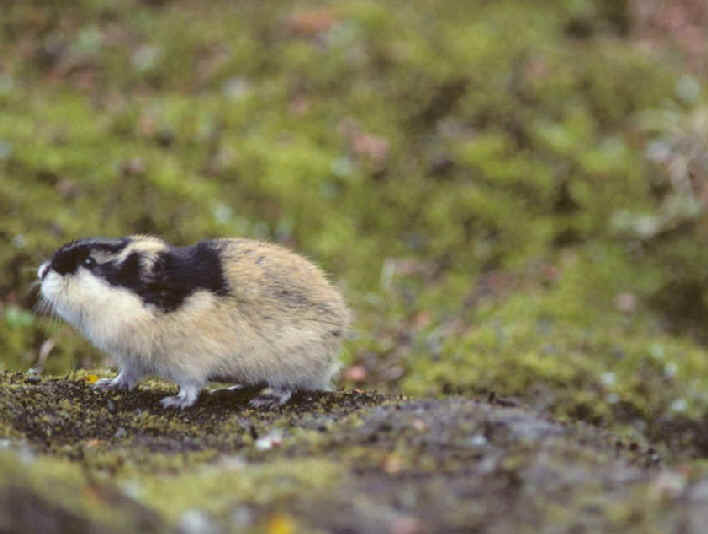
Norway Lemming
(photo courtesy of a FONT tour participant from Norway, Karl Frafjord)
- Ruddy Vole ______
Clethrionomys rutilus
- Grey-sided Vole ______
Clethrionomys rufocanus
- Bank Vole ______
Clethrionomys glareolus
- Balkan Snow Vole ______
Dinaromys bogdanovi (Dolomys milleri)
- Southern Water Vole ______
Arvicola sapidus
- Northern Water Vole ______
PO(*)
Arvicola terrestris
- Alpine Pine Vole ______
Pitymys (Microtus) multiplex
- Common Pine Vole ______
Pitymys subterraneus
- Mediterranean Pine Vole ______
Pitymys duodecimcostatus
- Iberian Pine Vole ______
Pitymys lusitanicus
- Yugoslavian
(or Greek) Pine Vole
______
Pitymys thomasi
- Savi's Pine Vole ______
Pitymys savii
- Bavarian Pine Vole (ce) ______
Microtus bavaricus
- Root Vole ______
Microtus oeconomus (ratticeps)
- Field Vole ______
Microtus agrestis
- Snow Vole ______
Microtus nivalis
- Cabrera's Vole (vu) ______ SP(*)
Microtus
(formerly Agricola) cabrerae
- Gunther's Vole ______
Microtus socialis (guentheri)
- Common Vole ______
Microtus arvalis
- Sibling Vole ______
Microtus rossiaemeridionalis (epiroticus)
- Harvest Mouse ______
Micromys minutus
- Rock Mouse ______
Apodemus mystacinus
- Pygmy Field Mouse ______
Apodemus microps
- Long-tailed Field Mouse (has been
called Wood Mouse) ______ PO(*)
SP(*)
Apodemus sylvaticus
- Yellow-necked Mouse ______
Apodemus flavicollis
- Striped Field Mouse ______
Apodemus agrarius
- Brown Rat (i) ______ (has
also been known as Common Rat or Norway Rat)
Rattus norvegicus
- Black Rat (i) ______ (has
also been known as Ship Rat or Roof Rat)
Rattus rattus
- Steppe Mouse _______
Mus apicilegus (hortulans)
- Algerian Mouse ______
Mus spretus
- Western House Mouse ______
Mus domesticus
- Eastern House Mouse ______
Mus musculus
- Spiny Mouse ______
Acomys minous (cahirinus)
- Roach's Mouse-tailed Dormouse (en) ______
Myomimus roachi
- Edible Dormouse ______
Glis glis
- Forest Dormouse _______
Dryomys nitedula
- Garden Dormouse ______
Eliomys quercinus
- Common Dormouse ______
Muscardinus avellanarius
- Northern Birch Mouse ______
Sicista betulina
- Southern
(or Severtzov's) Birch Mouse (nt) ______
Sicista subtilis
(Range: from Romania eastward)
Old World Porcupines (Family Hystricidae)
- Crested Porcupine ______
Hystrix cristata
CARNIVORES (Order Carnivora)
Families include:
Canines: Dogs & Foxes (Canidae)
Felines: Cats (Felicae)
Bears: (Ursidae)
Mustelids: Weasels & allies (Mustelidae)
CANINES, Dogs & Foxes (Family Canidae)
(35 species worldwide)
-
Arctic Fox ______ IC(*)
Vulpes
(formerly
Alopex)
lagopus
-
Red Fox (*) (ph) ______ HU(*) PO(*) SP(*)
(now considered
conspecific with Red Fox of North America) (NOTE AT END OF LIST)
Vulpes vulpes
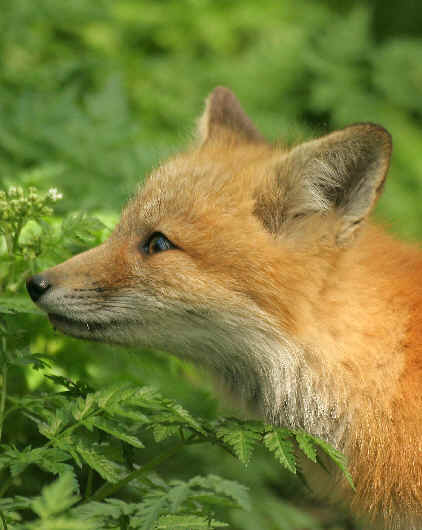
Red Fox
(photo by Doris Potter)
- Gray Wolf (ph) ______
Canis lupus
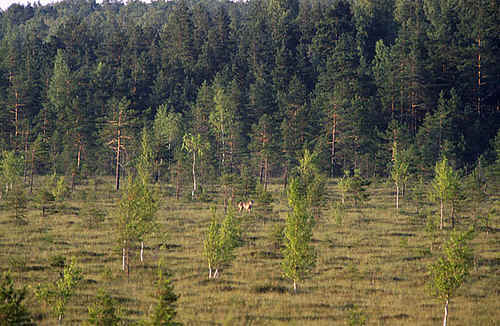
In the distance, there's a Gray Wolf.
An indication that this is a wild area in Estonia.
- Golden Jackal ______
Canis aureus
- Raccoon Dog (ph) ______
Nyctereutes proctonoides
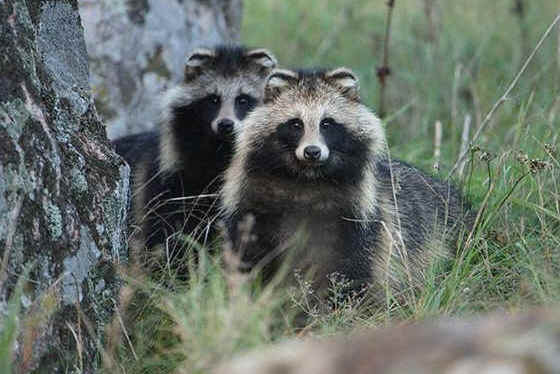
Raccoon Dogs in Estonia
FELINES, Cats (Family Felidae) (39 species worldwide)
- Eurasian Lynx (ph) ______ PO(*)
Felis
(formerly Lynx) lynx
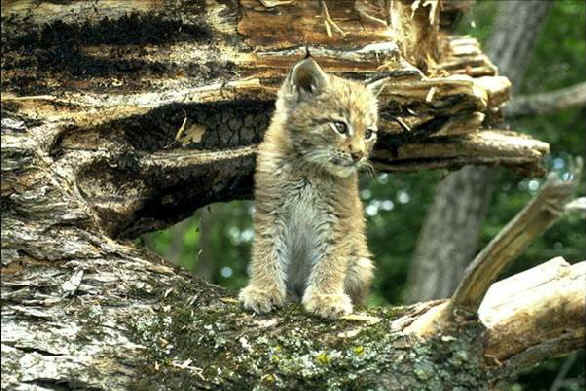
A young Eurasian Lynx
(photo by Howard Eskin)
- Iberian Lynx (has also been called Pardel
Lynx) (Ece) ______ SP(*) (a relict population of the Eurasian Lynx
- a smaller-sized animal) (restricted to southwest Spain & nearby
Portugal, critically endangered)
Felis
(formerly Lynx) pardina
- Wildcat ______
Felis silvestris
BEARS (Family Ursiodae)
(8 species worldwide)
- Brown Bear (ph) ______ RM(*)
(considered
conspecific with Grizzly Bear
of North America; the Brown Bear in Eurasia & North America has a
number of subspecies.)
Ursus arctos
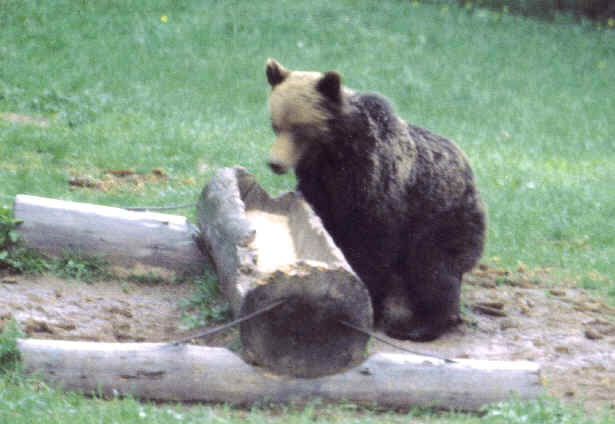
A Brown Bear photographed during a FONT tour in Romania
(photo by Alan Brady)
- Polar Bear (Evu) ______
Ursus maritimus
MUSTELIDS, Otters, Weasels, & Badgers (Family
Mustelidae) (68 species worldwide)
- Stoat ______ PO(*)
SW(*) (considered
conspecific with the Ermine,
of North America, where it was formerly called Short-tailed Weasel)
Mustela erminea
- Least Weasel ______ SP(*)
(also occurs in North America)
Mustela nivalis
- European Mink (en) ______
Mustela lutreola
- American Mink ______ IC(*)
(i)
Mustela vison
- Western Polecat ______ SP(*)
Mustela putorius
- Steppe Polecat ______
Mustela eversmanni
- Marbled Polecat (vu) ______
Vormela peneguena
- Pine Marten ______ PO(*)
Martes martes
- Beech Marten ______
Martes foina
- Sable ______
Martes zibellina
- Wolverine (vu) ______
Gulo gulo
- European Badger ______
Meles meles
- Eurasian Otter ______
PO(*)
Lutra lutra
- Common Genet ______
Genetta genetta
SHREWS (in the Order Soricodae, Family Soricidae) (335
species worldwide)
- Least Shrew ______
Sorex minutissimus
- Appenine Shrew ______
Sorex samniticus
- Common Shrew ______
Sorex araneus
- Pygmy Shrew ______
Sorex minutus
- Dusky Shrew ______
Sorex isodon
- Masked Shrew ______
Sorex caecutiens
- Alpine Shrew ______
Sorex alpinus
- Millet's Shrew ______
Sorex coronatus
- Spanish Shrew ______
Sorex granarius
- Water Shrew ______
Neomys fodiens
- Miller's Water Shrew ______
Neomys anomatus
- Canary Shrew (en) ______
CI(*) (on Lanzarote & Fuerteventura Islands;
endemic to the eastern Canaries)
Crocidura canariensis
- Bicolored White-toothed Shrew ______
Crocidura leucodon
- Lesser White-toothed Shrew ______
Crocidiura suaveotens
- Greater White-toothed Shrew ______
Crocidura russula
- Cretan White-toothed Shew (vu)
______
Crocidura zimmermanni
- Pygmy White-toothed Shrew ______
Suncus etruscus
DESMANS. MOLES (Family Talpidae) (42 species worldwide)
- Pyrenean Desman ______
Galemys pyrenaicus
- Russian Desman (vu) ______
Desmana moschata
- Blind Mole ______
Talpa caeca
- Common Mole ______
Talpa europaea
- Roman Mole ______
Talpa romana
BATS (order Chiroptera -
with about 950 species worldwide, the diversity of
bats is second only to that of rodents)
- Egyptian Slit-faced Bat ______
Nycteris thebaica
- Lesser Horseshoe Bat ______
Rhinolophus hipposideros
- Mediterranean Horseshoe Bat (vu) ______
Rhinolophus euryale
- Blasius' Horseshoe Bat (vu) ______
Rhinolophus blasii
- Greater Horseshoe Bat ______
Rhinolophus ferrumequinum
- Mehely's Horseshoe Bat (vu) ______
Rhinolophus mehelyi
- Whiskered Bat ______
Myotis mystacinus
- Brandt's Bat ______
Myotis brandtii
- Daubenton's Bat ______
Myotis daubentonii
- Long-fingered Bat (vu) ______
Myotis capaccinii
- Pond Bat ______
Myotis dasycneme
- Natterer's Bat ______ SP(*)
Myotis nattereri
- Geoffrey's Bat ______
Myotis emarginatus
- Bechstein's Bat
(or Myotis) (vu) ______
Myotis bechsteinii
- Nathalina Bat ______
Myotis nathalinae
- Greater Mouse-eared Bat ______
Myotis myotis
- Lesser Mouse-eared Bat ______
Myotis blythi (oxtgnathus)
- Common Pipistrelle ______ HU(*)
SP(*) SW(*)
Pipistrellus pipistrellus
- Nathusius Pipistrelle ______
Pipistrellus nathusii
- Kuhl's Pipistrelle ______ SP(*)
Pipistrellus kuhlii
- Savi's Pipistrelle ______
Pipistrellus savii
- Madeira Pipistrelle (en) ______
Pipistrellus maderensis
- Leisler's Bat ______
Nyctalus leisleri
- Noctule ______
Nyctalus noctula
- Greater Noctule ______
Nyctalus lasiopterus
- Azores Noctule (en) ______
Nyctalus azoreum
- Serotine Bat ______
Eptesicus serotinus
- Northern Bat ______
Eptesicus nilssoni
- Parti-colored Bat ______
Vespertilio murinus
- Hoary Bat ______
Lasiurus cinereus
- Barbastelle Bat (now
Western Barbastelle) (vu) ______
Barbastella barbastellus
- Gray Long-eared Bat ______
Plecotus austriacus
- Brown Long-eared Bat ______
Plecotus auritus
- Canary Long-eared Bat (en)
______
Plecotus teneriffae
- Sardinian Long-eared Bat (vu)
______
Plecotus sardus
- Mountain Long-eared Bat (nt)
______
Plecotus macrobullaris
- Schreiber's Bat ______
Miniopterus schreibersii
- European Free-tailed Bat ______
Tadarida teniotis
OLD WORLD MONKEYS (in the Order Primates, the Family Cercopithecidae) (132
species in the Old World)
- Barbary Macaque ______ SP(g)(*)
(i)
(native range: in mountains of Morocco & Algeria, formerly
Libya) (NOTE AT END OF LIST)
Macaca sylvanus
EVEN-TOED UNGULATES (Order Artiodactyla)
This order, worldwide, is diverse, including: pigs, hippopotamuses, camels,
deer, antelope, and cattle.
PIGS (Family Sulidae) (17 species in the Old World)
EVEN-TOED UNGULATES (Order Artiodactyla)
This order, worldwide, is diverse, including: pigs, hippopotamuses, camels,
deer, antelope, and cattle.
PIGS (Family Sulidae) (17 species in the Old World)
- Wild Boar ______ PO(*)
RM(*) SP(*)
Sus scrofa
CAMELS (Family Camelidae) (7
species worldwide)
- Dromedary
______ CI(*)
(introduced on Lanzarote Island)
Camelus dromedarius
DEER (Family Cervidae) (47 species worldwide)
- Red Deer / European Stag ______ PO(*)
RM(*) SP(*) SW(*) (conspecific with the Elk
of North America)
Cervus elaphus
- Fallow Deer (ph) ______ SP(*)
SW(*)
(i)
(native range: the woods of southern Turkey) (NOTE AT END OF LIST)
Dama dama
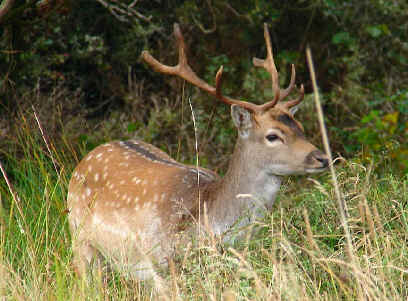
Fallow Deer
(photo during the FONT Sept 2007 Sweden Tour by James
Scheib)
- Elk (ph) ______ PO(*)
SW(*) (conspecific with the Moose
of North America)
Alces alces
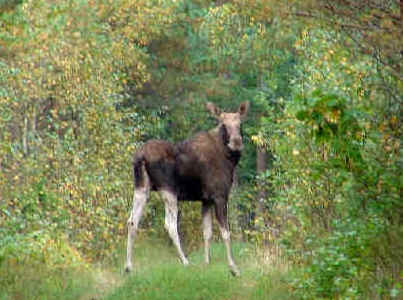
Elk
(called
Moose
in North America)
(photo during FONT Sept 2007 Sweden Tour by James Scheib)
- Reindeer (ph) ______ IC(*)
(i)
(NOTE AT END OF LIST)
Rangifer tarandus
(the single member of its genus)
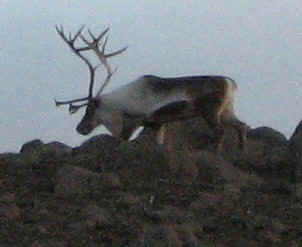
Above: a male Reindeer, photographed during a FONT October Iceland Tour
(photo by Claude Bloch)
Below: During another FONT tour in Iceland, in
June 2012, more Reinbeer
(photo by Gabriel Hauser)
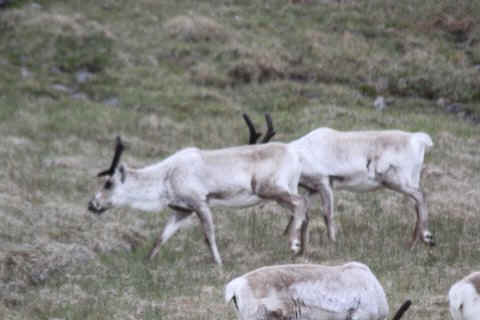
- Western Roe Deer ______
HU(*) PO(*) SP(*) SW(*)
Capreolus capreolus
SHEEP, GOATS, BISON, & MUSKOX (Family Bovidae) (141 species worldwide)
SHEEP, GOATS, BISON, & MUSKOX (Family Bovidae)
(141 species worldwide)
- European Bison (or Wisent)
(vu) ______ PO(*) (reintroduced in Poland) (formerly widely in forests of Europe &
Russia) (endangered) (NOTE AT END OF LIST)
Bison bonasus
- Chamois ______
Rupicapra rupicapra
- Pyrenean Chamois (has also been called Isard)
______ FR(*) SP(*)
Rupicapra pyrenaica
(formerly part of Rupicapra rupicapra, Chamois)
- Alpine Ibex ______
Capra ibex
- Spanish Ibex (ph) ______ SP(*)
(endemic to Spain) (IN PHOTOGRAPH AT BEGINNING OF LIST)
Capra pyrenaica
- Cretan Wild Goat ______
Capra aegagrus
- Mouflon ______ CI(*)
Ovis orientalis musimon ("Sardinian Mouflon") (vu)
Ovis orientalis ophion ("Cyprus Mouflon")
(vu)
- Saiga (ce) ______
Saiga tatarica
MARINE MAMMALS I - SEALS & SEA LIONS (order Pinnidedia,
"fin-footed")
EARLESS SEALS (Family Phocidae) (20 species worldwide)
- Walrus
______ IC
Odobenus rosmanus rosmarus (subspecies in North Atlantic)
- Harbor Seal (*) (ph) ______ IC(*) SW(*)
Phoca v. vitulina ("Eastern Atlantic" Harbor Seal)
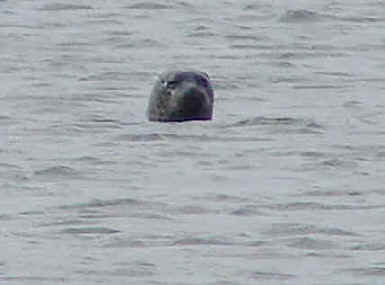
Harbor Seal
(photo during FONT Sept 2007 Sweden Tour by
James Scheib)
- Harp Seal ______
IC
Phoca groelandicus
- Ringed Seal ______ IC
Phoca hispada
- Grey Seal (*) ______ IC(*) SW(*)
Halichoerus grypus
(the single member of its genus)
- Bearded Seal ______ IC
Erignathus barbatus
- Mediterranean Monk Seal (t1) (Ece) ______
Monachus monachus
- Hooded Seal ______
IC
Cystophora cristata
MARINE MAMMALS II - PORPOISES, DOLPHINS, & WHALES
(Order Cetacea)
TOOTHED WHALES (Suborder Odontoceti) includes: Dolphins & Porpoises, the
Beaked Whales, Sperm Whales, the Beluga and Narwhal)
MARINE DOLPHINS (Family Delphinidae)
(34 species worldwide)
- Rough-toothed Dolphin ______
Steno bredanensis
- Striped Dolphin ______ SP
(p)(*)
Stenella coeruleoalba
- Atlantic Spotted Dolphin ______
Stenella frontalis (attenuata)
- Short-beaked Common Dolphin (ph) ______
CI(*) IC SP
(p)(*) (also called
"Saddleback Dolphin")
Delphinus delphis
- Common Bottle-nosed Dolphin (ph) ______ SP
(p)(*)
Tursiops truncatus
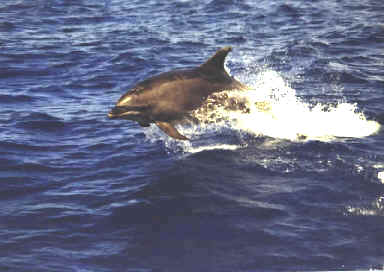
A Common Bottle-nosed Dolphin photographed during a FONT
tour
- White-beaked Dolphin ______ IC(*)
Lagenorhynchus albirostris
- Atlantic White-sided Dolphin ______
IC
Lagenorhynchus acutus
- False Killer Whale ______
Pseudorca crassidens
- Killer Whale
(or Orca) (ph) ______ IC
Orcinus orca
- Risso's Dolphin ______ (also
called Gray Grampus)
Grampus griseus
- Long-finned Pilot Whale (ph) ______ IC
SP(m)(p)(*) (has also been called "Blackfish")
Globicephala melas (formerly melaena)
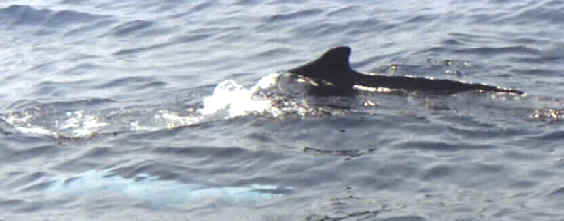
A Long-finned Pilot Whale photographed during a
FONT tour
- Short-finned Pilot Whale (ph) ______ CI
(p)(*) (has also been called "Blackfish")
Globicephala macrorhynchus
- Harbor Porpoise (t3) (Evu) ______
IC
Phocoena phocoena
- Beluga (t3) ______
IC
Delphinapterus leucas
- Narwhal ______
IC
Monodon monoceros
- Pygmy Sperm Whale (ph) ______
Kogia breviceps
- Dwarf Sperm Whale (ph) ______
Kogia simus
GREAT SPERM WHALE (Family Physeteridae) (1 species
worldwide)
- Great Sperm Whale (t3) (Evu) (ph) ______ IC
SP(m)(p)(*)
(has also been called Cachalot)
Physeter catadon
(formerly Physeter macrocephalus) (the single member of
its genus & family)
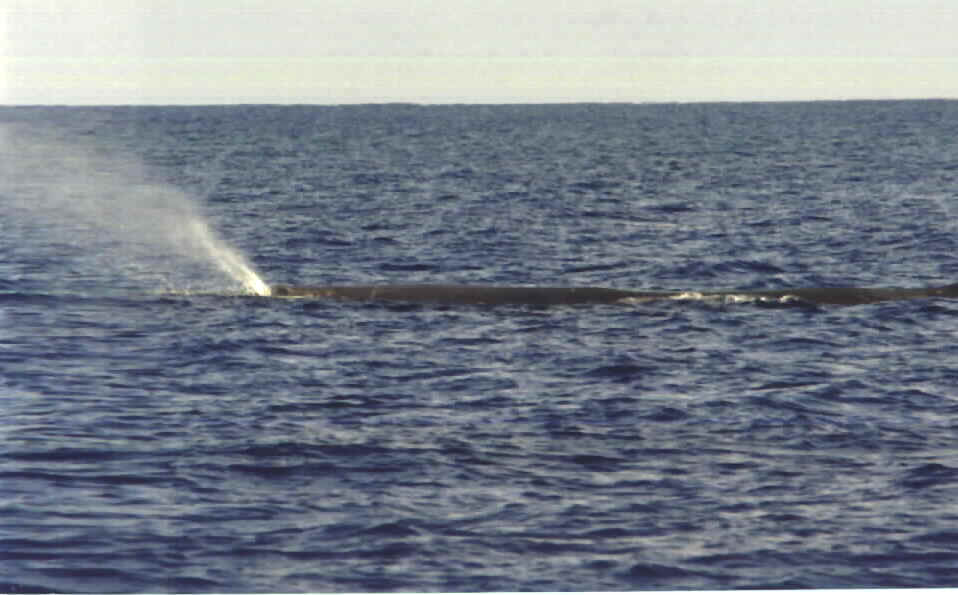
A Great Sperm Whale
during a FONT tour.
Note the characteristic angled spout.
This species has been seen during the FONT Spain Tour,
offshore between Spain & Morocco.
- Gervais' Beaked
Whale ______
Mesoplodon europaeu
- Blainsville's Beaked
Whale ______
Mesoplodon densirostris
- True's Beaked
Whale ______
Mesoplodon mirus
- Sowerby's Beaked
Whale ______
Mesoplodon bidens
- Gray's Beaked
Whale ______
Mesoplodon grayi
- Cuvier's Beaked
Whale (ph) ______
Ziphius cavirostris
- Northern Bottle-nosed
Whale ______ IC
Hyperoodon ampullatus
- Blue Whale (t2) (Een) (ph) ______
IC(*)
Balaenoptera m. musculus
(subspecies in the North Atlantic & North Pacific Oceans; 2 others
subspecies in the Southern Hemisphere)
Blue Whales are up to 100 feet in length, and weigh up to 150
tons, or 300,000 pounds.
It is the largest creature on Earth.
Only 1,500 are estimated to be in the North Atlantic Ocean.
The Blue Whale is a globally endangered species, but fortunately it
continues to survive.
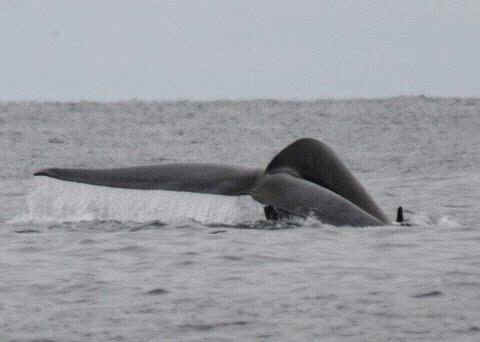
A Blue Whale photographed during the FONT Iceland
Tour in June 2012
1 of 2 Blue Whales seen during that tour.
Actually, in this photo, a small portion of a very large whale. With most of
the tail,
the very rear portion of the back, and part of the fin still above the
water,
as the whale began a deep dive.
- Fin Whale (t2) (ph) ______ IC
Balaenoptera physalus
- Sei Whale (t2) (Een) ______ IC
Balaenoptera borealis
- Northern Minke Whale (ph) ______ IC(*)
Balaenoptera acutorostrata
- Humpback Whale (t3) (ph)
______ IC
Megaptera novaeangliae
- Bowhead Whale (t1/t2) (Een)
______ IC
Balaena mysticetus
- North Atlantic Right
Whale (t2) (Ece) (ph) ______ IC
Eubalaena (formerly Balaena) glacialis
Notes:
Barbary Macaque: There's a naturalized population (of 30-40 animals) on
the Rock of Gibraltar that originated from North African stock.
Fossils indicate the animal was widespread through Europe during the
Pleistocene. Claims that some may have survived in southern Spain until the
1890's are unlikely to be correct.
Red Fox: The most widespread, and abundant, wild carnivore in the world.
Fallow Deer: Extinct in Europe following the last glaciation, except for pockets
around the Mediterranean. Now abundant following widespread introductions.
Reindeer: First introduced into Iceland in 1771 - 13 from northern Norway.
There were further introductions. Numbers increased and peaked in the mid-19th
Century. The population then declined rapidly, until less than 200 were left in
1940. Now, only in eastern Iceland, numbers have increased again, and are
stabilized at about 3,000.
(European) Bison: Extinct in the wild in 1919. (In Roman times, found in
Germany and Belgium, with records of herds of many thousands on migration.)
Reintroduced to the wild from zoos, particularly in the Bialowiecza Forest in
Poland. Total population now 1500-2000.
To
Top of Page


 MAMMALS
MAMMALS














